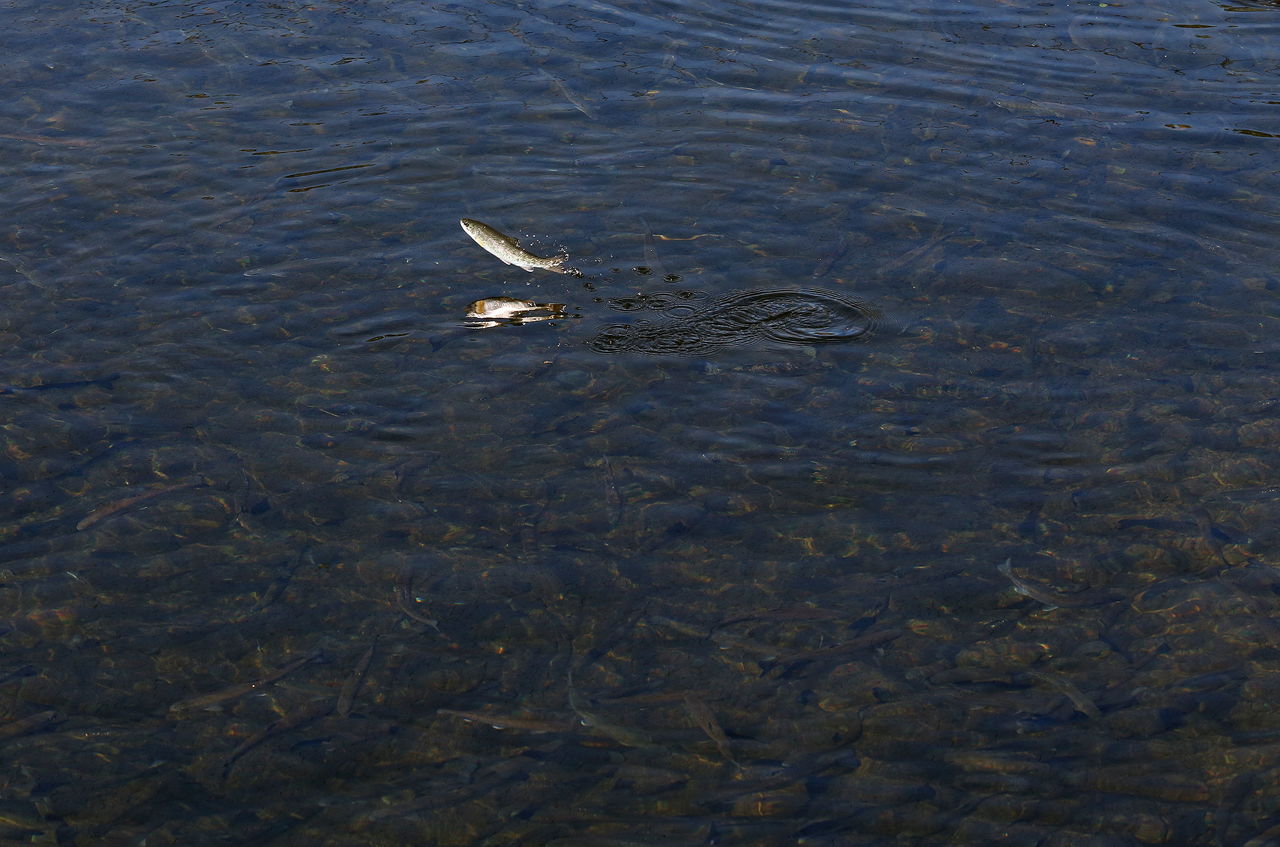SULTAN — At the Wallace River Hatchery outside Sultan, the year-old early winter steelhead trout are getting antsy in their holding pen.
It’s smolting season, and the fish, about 8 or 10 inches long, leap out of the water, flashing silver in the sun.
Occasionally the fish school and charge forward near the surface, creating a moving wave front.
“They’ll ball up and work the edges,” said Trevor Jenison, a fish hatchery specialist for the state Department of Fish &Wildlife.
The fish are looking for an exit their instincts tell them is there, but for the past two years hasn’t been available to them.
Fortunately for the fish, the word came down Monday that they can be released directly into the Wallace River.
Five hatcheries on Puget Sound rivers, including Wallace River, Reiter Pond in Gold Bar and Whitehorse near Darrington, can release the fish under the permit issued by NOAA Fisheries, the federal agency whose mission includes protecting endangered fish species and marine habitat.
The plan was the result of a settlement agreement between the state and the Wild Fish Conservancy, a nonprofit based in Duvall.
In 2014, the nonprofit sued the department, saying the state hadn’t taken into account the risk that hatchery fish would interbreed with Puget Sound wild steelhead, which are listed as threatened under the Endangered Species Act.
In a controversial move, the state then canceled the release of steelhead for 2014 into Puget Sound rivers.
The new management plan was drafted by the state and five local tribes, including the Tulalip Tribes and the Stillaguamish Tribe of Indians. NOAA Fisheries approved the plan Friday.
“We’ve been on pins and needles, honestly, because the fish were ready to go, and we didn’t want to have them miss that window,” said Edward Eleazer, the Wallace River Hatchery operations manager.
Monday at about 10 a.m., the screens were raised and the fish — some of them, in any event — began to drop into the exit channel and head toward the river.
By 2 p.m., about 8,500 had passed through.
The hatchery plans to release 27,600 of the approximately 58,000 fish in the channel. Those fish will migrate to Puget Sound and the ocean over the next few weeks.
The leftover steelhead, migratory rainbow trout, will probably be stocked in local lakes, such as Cranberry Lake in Anacortes or Green Lake in Seattle, Eleazer said.
The management plan calls for three specific measures to ensure the hatchery and wild stocks won’t interbreed, said Annette Hoffmann, the Region 4 Fish Program Manager for the state.
One of those conditions is reduction in size of some of the fish releases. The second measure is to continue monitoring the impact of the hatchery program on wild populations.
The final measure is to continue developing “gene banks” for wild steelhead — keeping certain rivers entirely free of hatchery-raised fish.
The plan was approved just in time for this season’s smolt.
“We want them to go as quickly as possible,” Hoffman said. “What will have the least amount of impact on listed species.”
The steelhead are labeled early winter release, meaning they will return as adult fish in a year and a half, in the late fall of 2017.
Chris Winters: 425-374-4165; cwinters@heraldnet.com. Twitter: @Chris_At_Herald.
Talk to us
> Give us your news tips.
> Send us a letter to the editor.
> More Herald contact information.
























